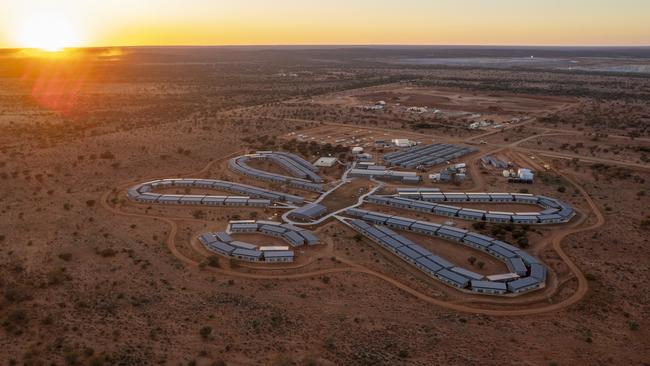January killing season for critical minerals market darlings, as more projects face axe in lithium and nickel
State and federal resources ministers will hold talks with lithium and nickel companies this week after January’s critical minerals killing season claimed new victims.
State and federal resources ministers will hold crisis talks with lithium and nickel companies this week after January’s critical minerals killing season claimed new victims, including Andrew Forrest’s Wyloo Metals, a BHP nickel business and former market darlings Chalice Mining and Liontown Resources.
BHP joined the critical minerals carnage late on Monday, saying it would mothball its Kambalda nickel concentrator in the West Australian Goldfields region after Liontown, Chalice, South32 and Wyloo all announced pullbacks in response to tumbling prices for battery and clean energy metals on Monday, adding to the wave of mine closures and project deferrals that have plagued the sector over the past two months.
Federal Resources Minister Madeleine King on Monday said she would meet company bosses along with her WA counterpart, David Michael, on Thursday to “discuss challenges facing the industry and to inform possible responses from government”.
BHP made the announcement late on Monday, after Wyloo said it would close its Cassini mine – bought through the $760m acquisition of Mincor Resources last year – into care and maintenance from the end of May, citing tumbling nickel prices attributable to Indonesia’s production surge.
Wyloo’s mine is the primary supplier of nickel ore for BHP’s Kambalda concentrator, and BHP Nickel West asset president Jessica Farrell said on Monday its decision to mothball the Kambalda facility was a knock-on effect of Wyloo’s decision.
“Nickel West is a complex business combining underground mining operations, third-party supply, on-site smelting, downstream refining and a multistage supply chain in a fast-evolving global market,” she said.
“We are looking at a range of options to remain globally competitive in a very tough operating environment. Costs have risen sharply and continue to go up while prices have fallen as new supply comes into the market.”

Liontown said on Monday it had lost access to a $760m loan offered only three months ago after the company’s banking syndicate got the jitters on the back of Wood Mackenzie price forecasts that would put Liontown under pressure to meet lending covenants if proved correct.
At the same time, Chalice said it planned to slash 40 per cent from its 2024 spending as it waited for a market turnaround that might support the development of the company’s Gonneville precious and base metals project in WA.
South32 said it was undertaking a strategic review of its Cerro Matoso nickel mine in Colombia, citing structural changes in the nickel industry that have not only crashed the price of the steel and battery-making metal, but added pressure to the price of the ferronickel product produced by the mine, which traded at a near 30 per cent discount to the nickel price on the London Metals Exchange in the quarter.
Panoramic Resources and First Quantum Minerals have both cut back nickel production in WA this year. And Liontown joins Core Lithium in slowing and scaling back the ambition of adding new lithium supply to the global market.
Liontown CEO Tony Ottaviano told analysts on Monday the company’s banking syndicate – including the big four banks, the federal government’s Clean Energy Fund and Export Finance Australia, Societe Generale and HSBC – had told the company it could not extend time to finalise the $760m facility because the lithium price was forecast to fall below the levels on which its credit approvals were based.
Mr Ottaviano said the company held a more bullish view of the lithium price recovery, and was negotiating over the extension of a smaller facility to allow the company to finalise construction of its Kathleen Valley lithium project in WA.
He said Liontown was also conducting a review of the project, including deferring the timing of a previously announced 4 million-tonne-a-year expansion to the project, sequencing adjustments to the mine plan, and other cost-cutting measures.
The company said it had no plans to scale back the 3 million-tonne-a-year processing plant, currently under construction.
Liontown told shareholders it believed the decision had been made on the back of a recent Wood Mackenzie pricing report that slashed the price outlook for lithium by as much as 6 per cent.
“They’re expecting significant supply to come on from Africa and lepidolite supply in China to stay sticky, and there’s all this organic growth coming from existing players,” Mr Ottaviano said.
“Our view is that the pricing signals that they’re forecasting, by definition, would mean that some of that supply just will not come on. That’s why we differ in our perspective.”
Liontown said it expected to be able to update its shareholders on a new funding structure by the end of March.
The nickel sector’s woes are the result of the explosion of production in Indonesia, where the government’s long-held demands – for companies that want access to the country’s abundant laterite nickel deposits to build downstream refineries – are paying off. Indonesia is now producing about 1.5 million tonnes of nickel a year, more than half global supply. Its supply is dependent on cheap coal-fired power, and the country’s mining sector has been criticised for holding far lower environmental standards than in Australia or other major mining jurisdictions.
But the success of the policy also suggests the so-called “green premiums” Australian critical minerals companies have argued will eventually be built into pricing by major car manufacturers are not being realised in the actual metals market.
Ms King said the mining industry was used to the sharp changes in pricing in a normal commodity cycle, but the prospect of an extended downturn for lithium and nickel was a concern.
“Commodities traditionally go through natural and cyclical boom and bust cycles, but the potential prolonged impact this could have on Australia’s energy transition, local workforce and development of Australia’s minerals sector is a matter of great concern,” she said.
Liontown fell 21.3 per cent to 94c. Chalice lost 4.6 per cent to $1.02, and South32 shed 2.8 per cent to $3.15. BHP rose 12c to $45.85.





To join the conversation, please log in. Don't have an account? Register
Join the conversation, you are commenting as Logout